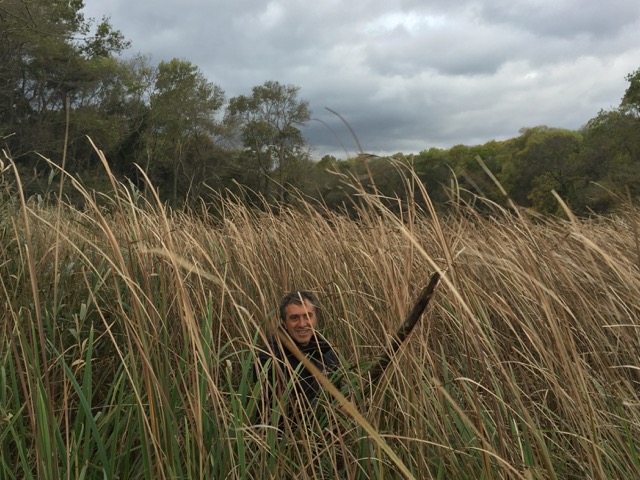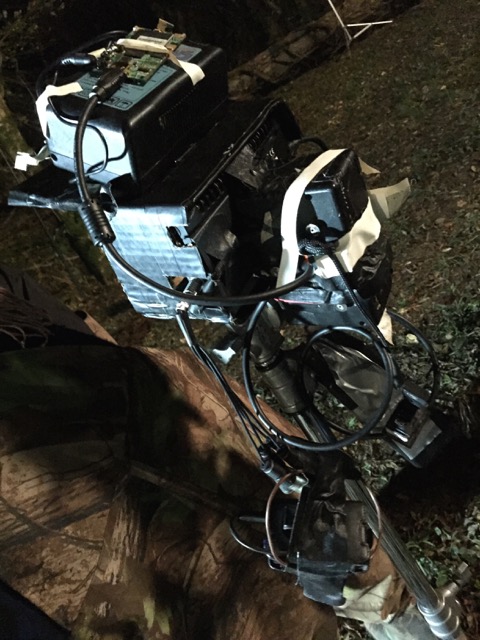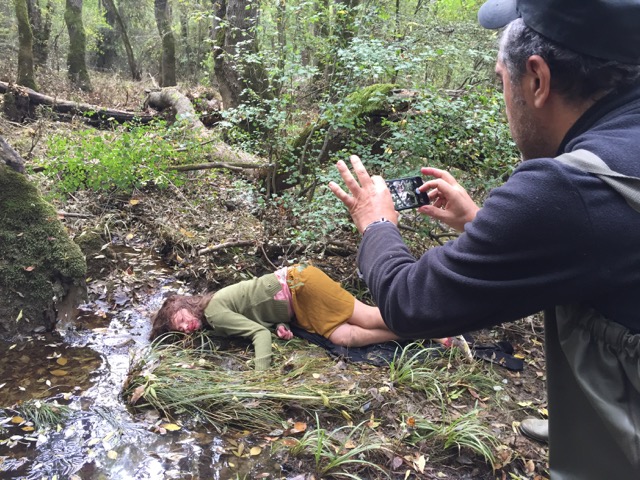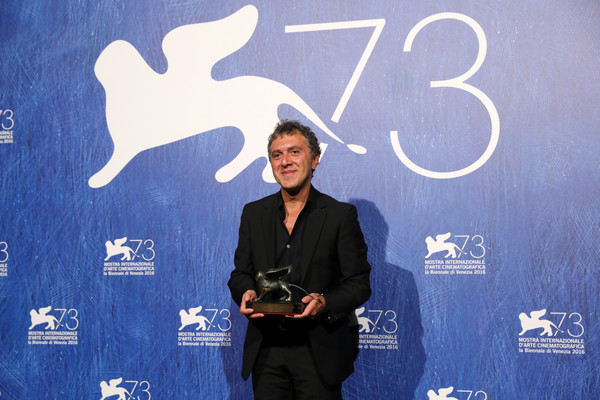Florent Herry about “Big Big world”

After winning the special jury award and the critic award at the 73rd Venice Film Festival, Koca Dünya (Big Big world) by Reha Erdem is now selected at the Cinemed. The photography is signed by Florent Herry, SBC member, who already did Singing Women which won Best Cinematography award at Ankara Festival in 2014, Jin (Best Camera award at the Turkish Frankfort Film Festival in 2014 and Best Cinematography at the BRFF), Kosmos (Best cinematography at Antalya Golden Orange Film Festival) or even My Only Sunshine (Best Cinematographer award at the Siyad critic Festival) and Times and Winds (Special Mention at Mannheim-Heidelberg Festival), all in collaboration with Reha Erdem.

Synopsis : Ali and Zuhal take their first step out of the orphanage into this big world committing a crime. It becomes impossible for them to live amongst people now, and the forest they take shelter in becomes a desert island for them. A boy and a girl that were thrown out of the civilized world would live the entire human story from scratch.
With : Ecem Uzun, Berke Karaer, Melisa Akman
Directing, editing and screenplay : Reha Erdem
Production : Atlantik film
Language : Turkish
Running time : 100′
Could you present yourself and your work in a few words ? It looks like you worked a lot in Turkey…
F.H. : In 1998, a friend of mine called me one day because he wasn’t able to shoot an entire movie. He proposed to me to do a part of it. It was my first feature film. Before that I did commercials for only six months. I’ve had the classic career : IAD, camera assistant in France and then in Belgium. I did the first part of the movie and since we got along pretty well with the director I did his eight following movies. I found a talented director who speaks French, studied at Paris 8 University. I think he also worked at the Jean Rouch school in Paris called Varan. He does everything : the script, the directing, the editing and even the sound editing. He is quite famous in Europe in festivals, but the distribution does not always follow. It’s a sheer artist who does really humanist, very poetic movies.
 Reha Erdem
Reha Erdem
From what I could see, your way of filming is almost fantastic.
F.H. : Yes indeed. We always try to distinguish ourselves from reality. We work a lot around undistinguished time. You can watch all our movies, you could not tell if we did them twenty-fives years ago or today. The production, costumes and sets are quite simple. We don’t care about realism. So we do a lot of old-fashion movies : steady shots, some slow-motion shots for very specific moments etc. However for this movie, the camera moved a lot more, but it was for some really specific matters.
Because the children flee ?
F.H. : Yes, because the movie is a big runaway. But also because it gave a lot of energy to the movie which was interpreted by young actors.
Where did you shoot ?
F.H. : The conditions were abnormal. We worked in a bayou, a real swamp just behind a dune at 150 feet from the Black sea, nearby the Bulgarian frontier. When it rained hard, the swamp was full of water, and when the sea was too agitated, it broke the dune for the same result. It was a magical but rather complicated set.
The set was at less than 2 miles from the hotel, I could even see it from my tenth floor bedroom’s window, but it took us two hours every morning and evening to reach. We had to take a car, a small boat, a tractor, and a motorboat. And of course each time we had to load and unload all the material. It was fun and quite adventurous ! Not to mention the bad weather : rain, storm, mud etc.

How was it to work with Reha ?
F.H. : He is very easy to work with, because he knows exactly what he wants and needs. But at the same time, it is very complicated, because we have very few means and he counts on me to shoot technical solutions. I was able to do it thanks to the technical evolution. Therefore, I’ve always used what’s the most recent and cheapest equipment on his projets. Our first movie was shot in 35mm, then we shot in 16mm, on a reporting camera’s 2/3 sensor, on an Alexa in prores, with a Sony F65 and lately on a Red Epic. We almost tried every format and option available, in order to be the most economical each time.
What were your intentions regarding the image on Koca Dünya ?
F.H. : Most of the time when you read a script you don’t know what to do, because the intentions regarding the images and the rhythm are not very present, you find your mark during the shooting. Unlike Cohen’s script : everything is written : camera’s movements, framings etc. It’s very cinematic, very visual. With Reha it is the same: everything is in the script. Moreover because he draws his own storyboards. The drawings are very simple, regular, clear and he often adds colors which enable us to understand the composition, the character’s position in the frame and how the editing will go. To be honest there is around 10% of the images that I have suggested that diverged from what he had in mind.
We shot his last three movies in scope, but we decided to use 1.85 : 1 for this one, because it fitted better : the characters moved more, we wanted to see them in entire and because of the forest, the horizon was most of the time blocked.

What about the lighting ?
F.H. : Reha doesn’t waist time with the implementation, once the different axis are decided, we stand by them, I don’t have to worry about that. So, I feel quite free for the lighting. His directing is quite simple, but very mastered, even though it’s far from easy. For example here, one of the actor was non-professional, he was quite hard to manage, more so in the beginning when we didn’t know each other, but every time I am quite amazed by Reha’s ability to find the right cast.The locations are often quite good. There is nothing to do. Here the bayou even became another character with whom the actors can really interact. I took the time to shoot some details : moving grass, clouds, the moon etc that can help Reha for editing, because he likes to create interactions. Regarding the lighting I have my own style, even though each film is different. I always try to be half-way from realism and poetry. I remove a lot from reality.

Such as ?
F.H. : The color range for instance. But I always try to be discrete. The dominant is strong, but I am making sure to offset it with other colors, so the viewer’s eyes can’t get used to it, because otherwise his mind soon compensates the dominant and can’t see it anymore, and then the movie falls in banality. This balance gives me a lot of work in post-production, because if the leaves’ shade or the sky’s color temperature change, the film will be completely different. Another solution would be to exaggerate the effect to prevent the mind to compensate the dominant entirely, but most of the time I don’t find this effect very nice, even though it’s becoming a new trend, like filter effects on instagram or visco cam.
That’s why, I try to remain subtle, but there is still an evolution as the story progresses. Here, the beginning of the movie is set in town where the two teenagers’ lifes are quite hard. For this part, I used passion colors, warm, a bit saturated, almost vulgar. And then once they arrived in the bayou, the situation is more peaceful. The contrast gets soft, the range is still warm, but in benevolent shades. And then as the story goes on, shades becomes more blue-green and cold. And there is also more night. It was my intention at first, but when I arrived in the forest in October the leaves were still quite green, but as the shooting moved forward, they were taking autumn’s colors and at the end there were no more leaves at all. Quite the opposite from what I wanted to tell. Even though it wasn’t easy, I manage to respect my idea in post.
Apart from that, we had fun doing a very nice dream scene. It’s one of the few scenes that are not drawn. Most of the time, we shoot this kind of scenes at the end, when we have done everything we want and we use a lot of tricks. Here it’s a night scene. We don’t know what is going on, the girl is sick, they struggle and at some point he outs her in the ground and we end up underwater. Reha asked me : how do we do that ? So I figured out that in the Black Sea in November, it was not possible, in the bayou, the water is black and like 10° C, so it won’t fit easier. At the hotel, there was a mini-swimming pool of 16-foot-long, 13-foot-wide, 5-foot-deep. I had already done a lot of underwater scenes, so I knew it to be too small, but we didn’t had the choice. Moreover the actress couldn’t swim, we didn’t have any dyvers of course, and the sub-marine camera wasn’t one, but a simple splash bag, so I had to put the stand and the head in the water because otherwise, the camera wouldn’t have sink. We shot it in 15 minutes, otherwise the camera would have taken water. But since everything was ready, and we knew exactly what we wanted, it went good. We did everything with simple and cheap means, without improvising : black plastic tarps, metal pigs and some leaves to sell the illusion.

So what did you have to light the movie ?
F.H. : The electrician team is the same since the first film we did together. There is a gaffer and two best boys. They are also the producers and they bring the truck with the material. The problem is that every light you put in the forest takes hours. It’s exhausting and I don’t speak Turkish very well, only Anglo-Turkish with Italian-hand-style pidgin. I had three light panels, all very different. I had to fight to get an helium Chinese balloon. I had already shot several night scenes with Reha using different means such as a “day for night” once which was a nightmare to grade and PARs on boom in the forest requiring cables for miles on, small generators and where every change is a problem. You crack up !
Therefore, I decided that I would use an helium Chinese balloon whatever happens, but it costs a lot so I suggested that we only take it for a few days. I had to negotiate a lot to get it: the electricians found it too expensive, too difficult to install and too dangerous because of the hard winds but I hung up to it and finally got it, and once the guys got acclimated to it, everything went perfectly and quickly! Reha couldn’t believe it.
Besides the night scenes I had to light up, I used a lot of butterflies and black cloth. I think that with digital, in ext-day, there is too much light, so I used a lot of blocking to reduce the amount of light.

And camera-wise, what material did you use ?
F.H. At the beginning I asked for a Dragon but we ended up using a Red Epic, because we got it on loan from the rental house. Same for the lenses: I asked for the Master Prime, but finally ended up with the Zeiss GO set. I don’t really choose my material, it is always a compromise between what I would like and what is available. Anyways, the most important is that the movie gets done. It is my job to do what I think is good for the project with what I have. And if there is a real problem, we always find an acceptable solution that fits to everyone. It is also a piece of equipment that I know well and whose I know the defaults. Plus, there were a lot of handheld and shoulder scenes, so it helped that I had a lightweight lenses set mounted on a small Epic camera and keeping a Raw signal with 3.1. compression.
 Video HF monitor
Video HF monitor
You talked about shoulder, did you shot a lot that way for “Big Big world” ?
F.H. : Yes, most of the movie is shot handheld and on tripod. There are some running scenes in the bayou that were impossible to shoot on a steadicam or with a crane because the ground was too unstable. To realize these sequences, we used a cable cam. The cable and the motor were Chinese and the head was a DJI Ronin. They had never done this before in Turkey but it shown as the best setup to shoot that kind of action. We ended up burning the motor of the cablecam but fortunately, it was the last shot. we also used a drone a lot. We actually used a lot of different rigs and configurations to keep that movement idea such as the Steadicam, some rouling scenes in a car, some really nice boat shots too.
 Cablecam at 50 ft high
Cablecam at 50 ft high
How many people were in the crew ?
F.H. : I had three assistants: a first AC, a second AC and a DIT. I didn’t know my first AC very well -whom I once worked with on a commercial- but he turned out to be a really good focus puller and he took really good care of the material despite the really bad weather conditions. Besides my camera department, I had no key grip. We tried to go on the shooting with the smallest possible crew. We were only 20 in total. There was no script supervisor. Reha watches the rushes every night so he sees directly if something is missing, which only happened once or twice during the shooting.
In turkey, they have a technician that doesn’t exist here. He is kind of a props supervisor and a grip. He is in charge of both some really tough things and some more precise stuff like getting a packshot ready or a funny mix. He is the one who’s going to put the sandbags on the stands, hang up everything, carry the dolly when needed, is in charge of safety on set. He is often a really strong guy who can carry everything alone. On this movie, he climbed to 90-feet-high trees, he welded a system to rig something onto a motorcycle, in spite of the fact that he wasn’t able to swim, he went in the water to catch some things, he was running in the forest while we could barely walk. He is really an incredible guy. A beast! In these countries, a lot of things are complicated but they will always find the solution, often some unbelievable ones for European countries or only with a lot of budget. They always work it out. What’s great with Reha is that he doesn’t set any restrictions” Even if we don’t have the money, we don’t care, we work it out but in other ways than in Europe.
 Serdat my handyman
Serdat my handyman
I was wondering: how did the DIT do to work in the middle of a bayou ?
F.H. : Well, at the beginning, it was hard for her, and I can understand it, working under these hard conditions was tough, but step by step, she got acclimated to it. She did the back-up’s sitting on a tree trunk, with the table in the mud, under the rain etc.
How did the collaboration with the other departments go ? Make up, costumes, decoration, …
F.H. : I was kind of afraid of the faces during the night scenes so we worked them with the make up department to make them lighter so we could see them better. I didn’t insist much for the boy because his skin tone was darker and when lighted it up, it rendered him sick and pale, but for the actress, it worked really good. But the conditions were still hard. For the costumes, we didn’t have enough umbrellas so whenever it was raining, the actors were completely wet. For the decoration, it was also tough. We tried to preserve the set as well as we could but after one week, the plants were trampled on, the ground marked with all our footsteps, etc. We had to replant it. When you work in the mud, you lose your shoes, you slip all the time, … The principal is that in the end, we don’t see it on screen.

How did the post-production go ?
F.H.: I was really lucky because the color grading society was sponsor of the movie so I had 4 week of color grading. I work with a French colorist, Pascal Novak, whom I already did 6 movies with. We had some good equipment there but it is not easy to keep a stable workflow from the beginning to the end, but we compensated that with the extra time we had.

What do you think of the final result ?
F.H. : It is beautiful. It works well. It is a simple movie but meanwhile there are some genius things. For example, at the beginning, the main character kills three people in a long take but we almost don’t see what happens, and it lasts 20 seconds. I don’t think we can do any easier. It tells that the characters are obliged to do some really violent things because they don’t have any alternative. It took us one day to rehearse the shot and set it in each detail and this is also amazing. Well, it is the smallest budget here in Venise, and we don’t have to be ashamed of its result.

What was, more or less, the budget for this movie ?
F.H. : I don’t know what the final budget was, but we were able to start thanks to the 200 000 € from the Turkish Ministry of Culture. In the end, it was a really tight budget but a lot of long term sponsors helped us, like the camera rental house, the postproduction and the lighting equipment. The hardest step for this kind of movie is to find someone for the distribution. Since the digital era, it became quite difficult for the independent productions to be seen. Before, you had to pay for the copy and it was really expensive, but once this was done, you could be sure that that your movie would be in theaters. Today, the copy is not expensive anymore, so the big productions flood the marketplace with hundreds of movie copies to make as much profit as possible and there is no more space for indie movies.
But you already won so many prizes…
F.H. : Yes, and for Big Big world, it is the first time that we win such an important prize in Europe: the Special Jury Award in Venise. Almost each of Reha’s movie has been selected for famous festivals such as Toronto, Berlin etc. But it doesn’t make that much of a difference for the distribution, even though nowadays, the Turkish cinema starts to have more and more visibility with directors like Nuri Bilge Ceylan (Winter Sleep – Palme d’or in Cannes 2014).
With indie movies, we are always blocked by the distributors, because they think that these movies are too complicated, like if the spectators were not clever enough to understand them… So even if we win a prize, the distributors keep on saying that the topic is too difficult to understand but in fact, it is really easy. I think that it is due to the fact that the distributors are looking for a kind of exotism in the foreign movies that have to be confronted with the idea that the spectator has of the country. So when some really visionary artists such as Apichapong Verasetacool, Tsai Ming Liang or Reha Erdem present their contemporary vision of their country, it is obvious that it doesn’t match with the exotic standards and it becomes a movie seen as a “complicated” movie for the distributors. Anyways, the only important thing to me is that these movies can exist and when I finish one of Reha’s movie, it is always a little miracle. This is the only thing that counts after all.

Fisrt AC: Ozkan Karakoz
DIT: Esra Yzci
Gaffer: Senol Toz
Grip: Serdat Yuce
Colorist: Pascal Novak
Rental House: MTN
Post Production: Imag
English translation : Gaston Struye
